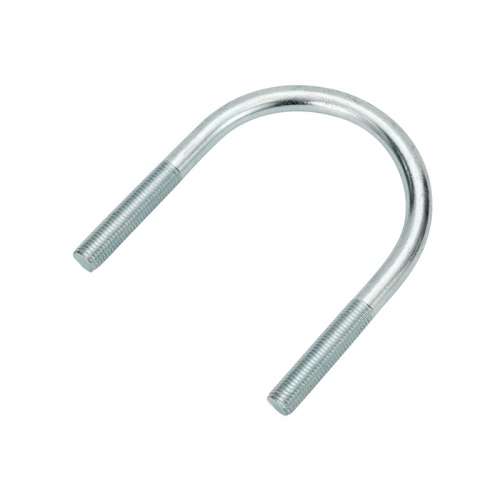- Client Services: +8613673237939
- Email: sales@mambascreens.com
Screen fixing bolt








Screen fixing bolt
In mining machinery, U-bolts are commonly used to connect and secure various mechanical components, structural parts, and accessories to ensure the stability and safety of equipment
Description
In mining machinery, U-bolts are commonly used to connect and secure various mechanical components, structural parts, and accessories to ensure the stability and safety of equipment.
Used to assist in fixing the strip screen, hooked at the bottom of the support beam
The auxiliary screen is effectively fixed on the curved screen frame to minimize screen damage.
A screen fixing bolt is a type of bolt used to secure screens or screen meshes in screening equipment, commonly used in industries such as mining, construction, and aggregate processing. The screens are critical components of the equipment, responsible for classifying materials based on size, and the bolts ensure the screen is securely attached, preventing loosening or detachment during the vibration and operation of the equipment.
Key Features:
U-bolts, compared to traditional straight bolts, possess several distinctive characteristics:
1. Strong Anchoring Capability: The unique U-shape of U-bolts provides them with strong anchoring ability. The U-shaped part of the U-bolt can better withstand tension, enhancing the stability and safety of the connection.
2. Wide Applicability: U-bolts are suitable for various applications requiring bolt connections, including but not limited to mechanical equipment, building structures, metal structures, and woodworking products, demonstrating a broad range of applications.
3. Easy Installation: U-bolts can be installed in a manner similar to ordinary bolts. They are inserted into pre-drilled holes and secured with nuts. Compared to bolts requiring special installation techniques, U-bolts offer easier installation.
4. Unique Shape: The special U-shape of U-bolts makes them particularly suitable for certain applications, such as anchoring situations or where special-shaped connectors are needed.
5. Additional Support: The U-shape of U-bolts can provide additional support. Therefore, in certain connection situations requiring extra support, U-bolts can serve to reinforce the structure.
6. Corrosion Resistance: U-bolts are typically available in different materials, such as carbon steel or stainless steel, to meet various corrosion resistance requirements in different environments, exhibiting certain weather resistance and corrosion resistance.
In summary, U-bolts possess characteristics such as strong anchoring capability, wide applicability, easy installation, unique shape, additional support provision, and corrosion resistance. They are suitable for various applications requiring bolt connections and certain anchoring requirements.
Specifications
The specification parameters of U-bolts typically include the following aspects:
1. Diameter (D): The diameter of U-bolts is usually measured in inches or millimeters. Common diameters include 1/4 inch, 3/8 inch, 1/2 inch, etc., or their corresponding millimeter sizes.
2. Length (L): The length of U-bolts refers to the distance from the bolt head to the end of the bolt. The length may vary depending on the application scenario and the depth of anchoring required. Common lengths include 1 inch, 2 inches, 3 inches, etc.
3. Thread specification: U-bolts typically come with standard threads or special threads, such as UNC (Unified National Coarse Thread) or UNF (Unified National Fine Thread). The choice of thread specification depends on the specific application scenario and requirements.
4. Material: The material of U-bolts usually includes carbon steel, stainless steel, etc. Depending on the environment and requirements, suitable materials can be chosen to meet corrosion resistance, strength, and other requirements.
5. Surface treatment: Surface treatments for U-bolts may include galvanization, heat treatment, etc., to improve their corrosion resistance and mechanical properties.
6. Head shape: The head of U-bolts may have different designs, such as flat head, round head, etc. The appropriate head shape should be selected based on specific application requirements.
7. Standards: The manufacturing and use of U-bolts typically need to comply with relevant standards, such as ASTM, DIN, etc., international standards, or industry standards.
These are common specification parameters for U-bolts, and the specific selection should be based on the application requirements, engineering design requirements, and relevant standards.
Additional information
In mining machinery, U-bolts have various applications, mainly including the following aspects:
1. Connecting and securing mechanical components: U-bolts are commonly used to connect and secure various components and structural parts of mining machinery, such as connecting frames, bases, brackets, etc. These connections require certain anchoring capability and stability, and U-bolts can provide reliable connection support.
2. Connecting moving parts: In mining machinery, some moving parts such as transmission devices, rollers, wheels, etc., need to be connected to other components. U-bolts can be used to connect these moving parts, ensuring smooth and safe operation.
3. Installing accessories and attachments: Mining machinery often needs to install various accessories and attachments, such as protective plates, guards, guide devices, etc. U-bolts can be used to secure these accessories and attachments, protecting the machinery and operators' safety.
4. Repair and maintenance: During the repair and maintenance process of mining machinery, U-bolts are commonly used to replace damaged bolts or connectors, restoring the integrity and stability of equipment structures, ensuring normal operation.
5. Adapting to harsh environments: Mining environments are often harsh, demanding higher stability and durability for equipment and connectors. Due to their special shape and strong anchoring force, U-bolts can adapt to the harsh working environment of mines and ensure firm and reliable connections.
In summary, U-bolts play an important role in connecting, securing, and repairing mining machinery, ensuring the stability, safety, and reliability of equipment. They are suitable for the manufacturing, installation, and maintenance processes of various mining machinery equipment.

Get Free Quote